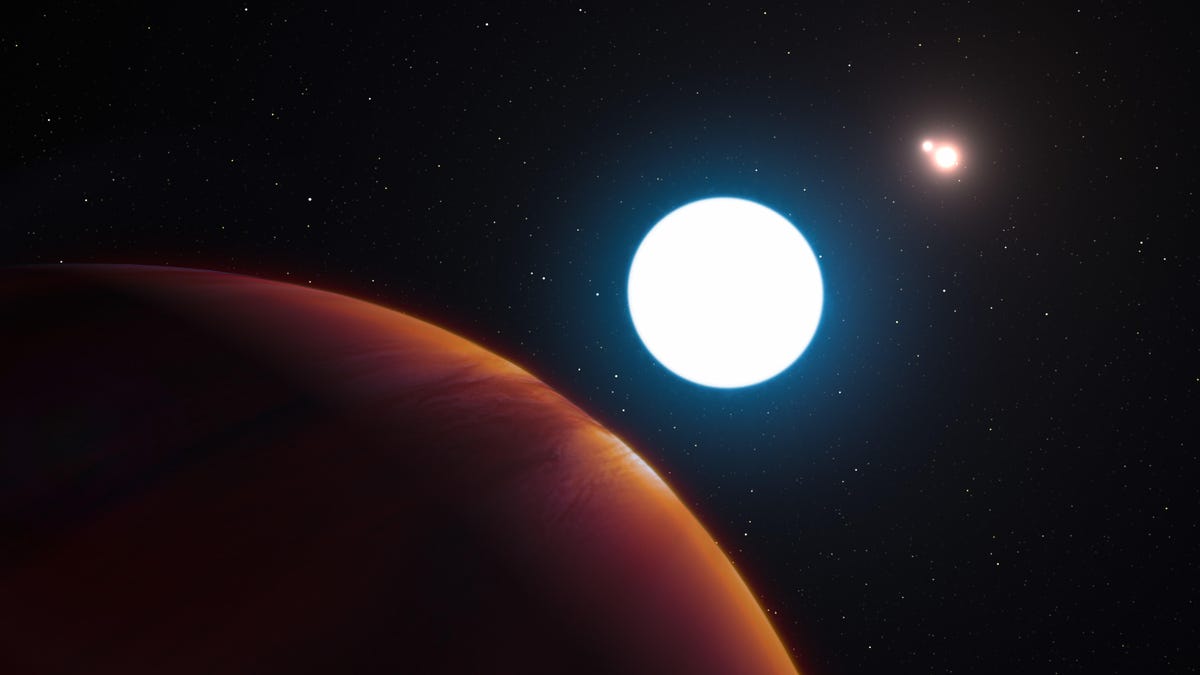An intriguing planet with three suns discovered
The recently found world orbits one of the stars, while the remaining pair wend their way through the sky like two ever-present red full moons.

This artist's impression shows a planet in a three-star system similar to LTT 1445Ab.
A not-too-distant planet where three suns dance across the sky could be a key in our search for life on worlds beyond Earth.
The planet is has the very uncharismatic name LTT 1445Ab, but thanks to observations from NASA's Transiting Exoplanet Survey Satellite (TESS) we know that the recently discovered Earth-sized planet is like something out of science fiction.
The Star Wars universe has Tatooine with its two suns, but LTT 1445Ab is part of a three-star system that's less than 23 light years from Earth. Astronomers have spotted at least one other planet in a three-star system, but it's a gas giant over 300 light years away.
If we ever come up with a way to travel at the speed of light, LTT 1445Ab would only be a 23-year journey, which is relatively close in galactic terms.
It would certainly be cool to visit LTT 1445Ab with its three red dwarf suns. It orbits one of the stars, while the remaining pair wend their way through the sky like two ever-present red full moons. The problem is that the planet isn't in the habitable zone and is almost certainly way too hot to host life.
But this tri-solar world still warrants plenty of study. For starters, it's just a little bigger than Earth and is probably a rocky planet like ours. It's also the second-closest planet that can be observed passing in front of, or transiting, its star and the closest one that we can see transiting a red dwarf. (Proxima b, the closest possible exoplanet, is no longer thought to transit its red dwarf host star.)
This is important because transiting planets offer scientists the opportunity to study atmospheres. This could also give us a better sense of the chances for finding life elsewhere in the universe because red dwarf stars are thought to be the most common type of stars.
LTT 1445Ab could wind up playing an important role in answering the classic question: Are we alone? Which is all the more reason it deserves a better name.

